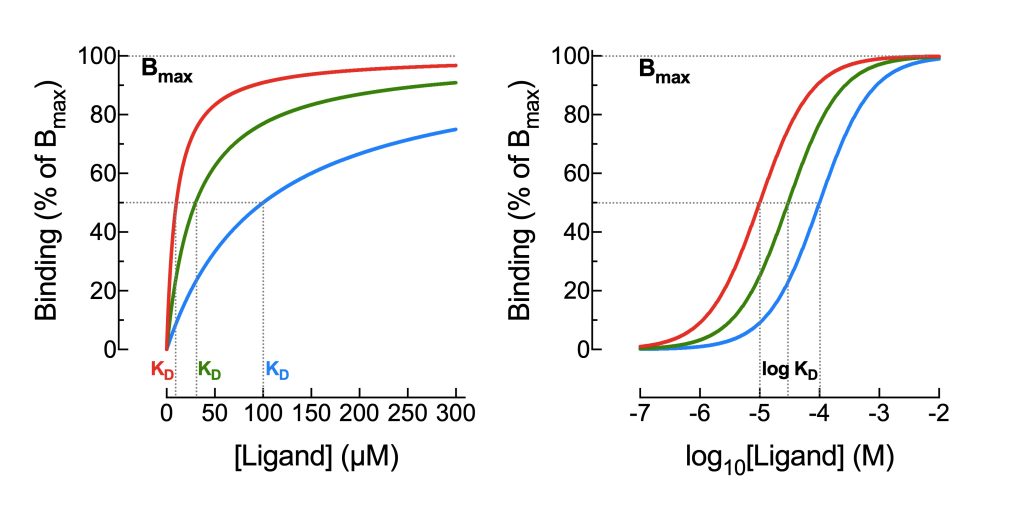Hyperbola
The shape of most binding curves for ligands interacting reversibly with a receptor or other target protein is hyperbolic. This is also true for the shape of most dose-response curves. Binding is saturable, reaching a maximum plateau at (theoretically) infinitely high ligand concentrations. The concentration of ligand at which binding is 50% of the maximum possible binding gives the KD for the binding interaction. The shape of the curve is described by the Hill-Langmuir equation. If hyperbolic data are instead plotted on a logarithmic concentration scale, the data appear sigmoidal.


